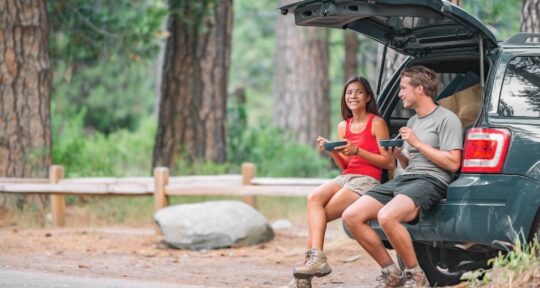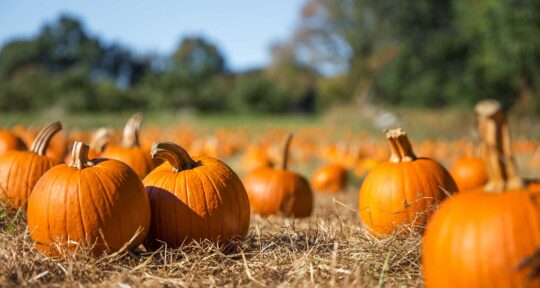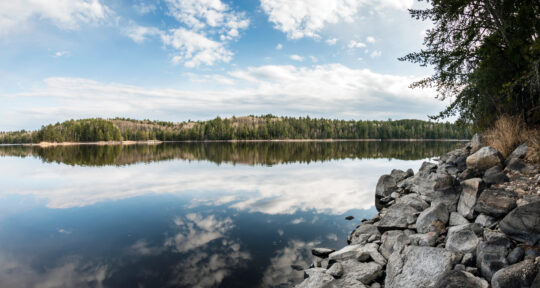While the elevation in the Midwest might not be comparable to more popular ski areas like Colorado, Vermont, and Utah, that doesn’t mean the region is altogether void of winter activity.
Sure, Midwest “mountains” have more in common with rolling hills than towering peaks, and ski and snowboarding seasons are dictated by temperamental weather patterns that could dump 2 feet of snow in October and not a single flake again until February—but at the end of the day it’s still possible to have a thrilling experience on the slopes throughout the Midwestern region.
Whether you’re looking for a challenging backcountry adventure in the Upper Peninsula or just a casual weekend of slope-side fun, food, and entertainment, these six ski and snowboarding destinations will fulfill your need to shred. And the best part? Passes and lodging are a fraction of the price you’d pay in more popular ski towns across the U.S.
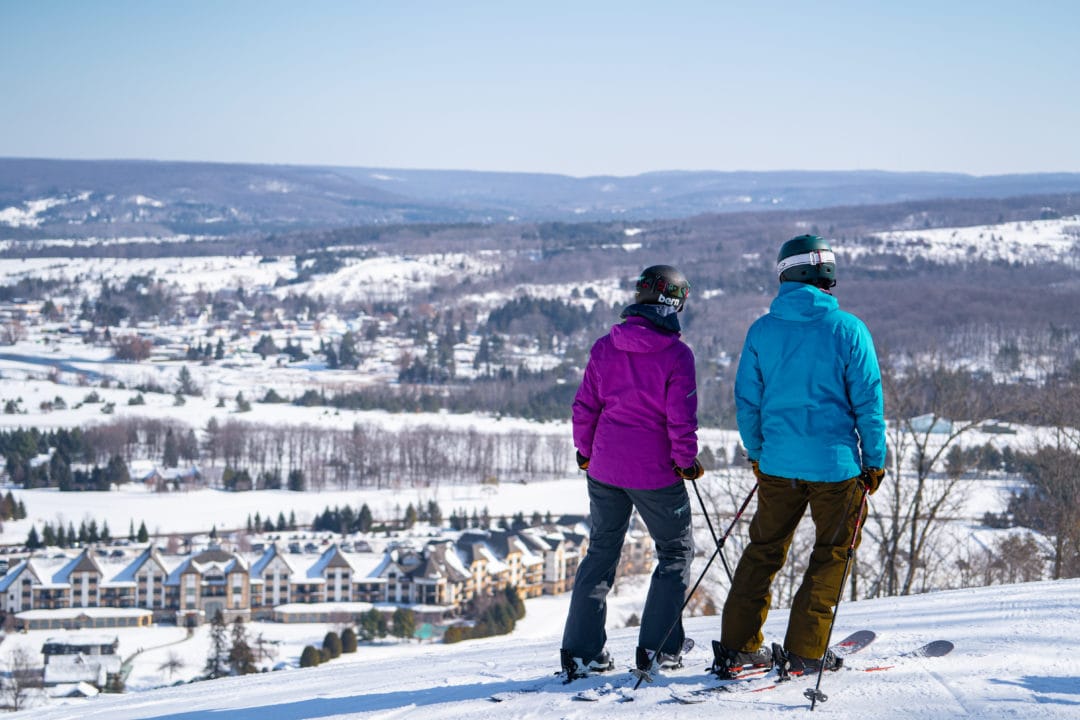
1. Boyne Mountain Resort, Boyne Falls, Michigan
By the numbers alone, Boyne Mountain Resort is an impressive skiing destination for the Midwest. With 415 skiable acres, a yearly average of 140 inches of snow, 60 downhill trails, 7 terrain parks, 12 lifts, and 500 feet of elevation, this resort offers more than enough to keep skiers and snowboarders of all levels occupied in the winter.
Opening in early December and closing in mid-April (weather permitting), Boyne Mountain is located in the northern portion of Michigan’s Lower Peninsula, near popular vacation areas like Charlevoix, Petoskey, and Traverse City (which has the closest major airport).
Lodging at Boyne is akin to the kind of accommodations you’d find in resort towns like Colorado’s Vail or Breckenridge. Offering nine types of lodging, ranging from European-style chalets and family-sized cabins to luxurious hotel suites, the family-owned ski resort is also home to Michigan’s largest indoor waterpark, Avalanche Bay.
For visitors looking for adventures that don’t include skis, snowboards, or water slides, perhaps the biggest appeal of this resort is the variety of activities offered. In the winter, guests can enjoy fat tire snow biking, ice skating, horseback riding, tubing, snowshoeing, cross country skiing, Sno-Go biking, and zip-lining. And in the warmer months, you can book tee times at two of the resort’s pristine golf courses or take a guided fly fishing excursion with Boyne Outfitters.
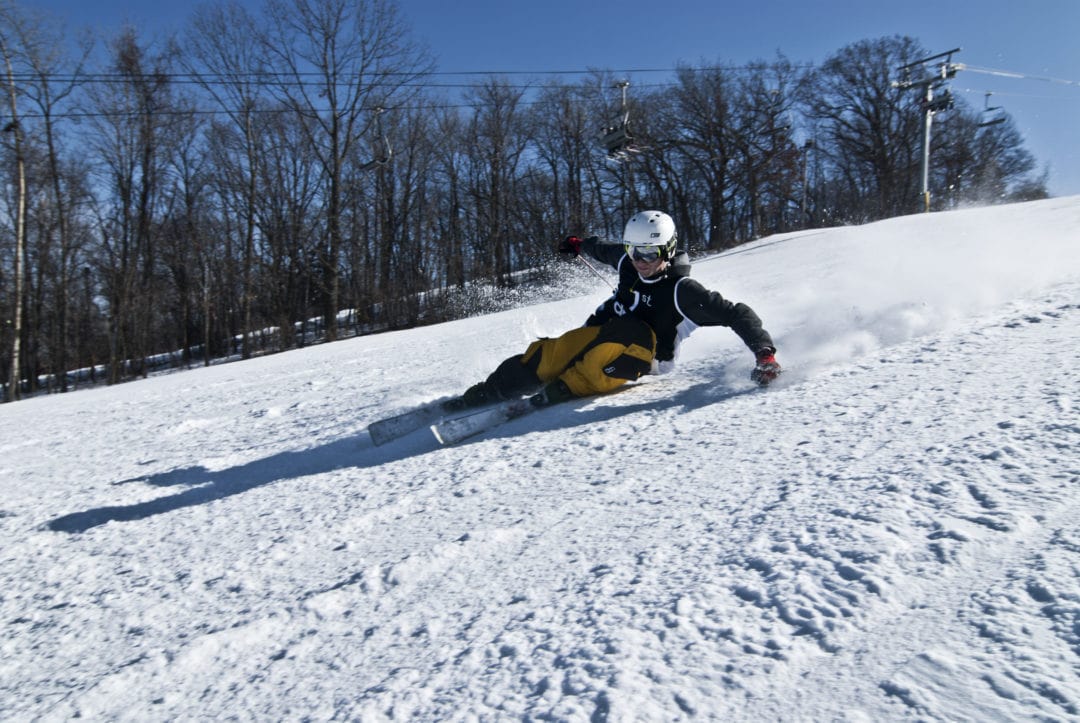
2. Cascade Mountain, Portage, Wisconsin
Only 3 hours outside of Chicago, 2 hours from Milwaukee, and less than an hour’s drive from Madison, Cascade Mountain has become a popular winter escape for residents living in the Midwest’s biggest cities. Known for its four technical terrain parks, night skiing and snowboarding runs, and an 800-foot tubing chute, Cascade is an idyllic winter destination for serious shredders, kids, and beginners alike. With nearly 50 runs total, Cascade also offers some of the longest runs in the Midwest, with one extending more than a mile—an impressive feature of this resort, considering the maximum vertical is only 450 feet.
While there isn’t lodging on the Cascade Mountain property, nearby Wisconsin Dells features plenty of hotel and dining options, making this an even more kid-friendly experience. Its proximity to major cities also makes Cascade an appealing option for those looking for a day trip to the mountain.
Open from early December to the beginning of April, Cascade offers a fairly long season, despite the average snowfall being around 56 inches—a fraction of what areas further north receive. Eleven lifts on 175 skiable acres help keep traffic at the resort moving swiftly, but its popularity can cause lines to back up during peak season and holidays. Either be prepared to patiently wait for lifts or visit on a weekday when the crowds have subsided.
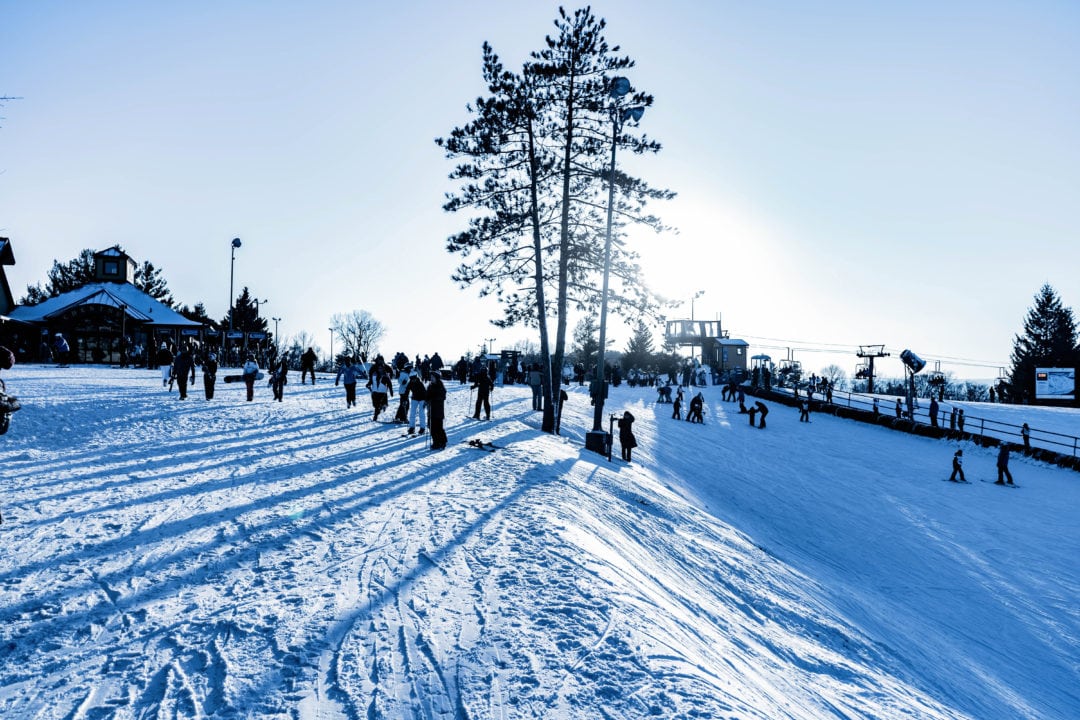
3. Chestnut Mountain Resort, Galena, Illinois
Possibly the only ski resort to feature views of the Mississippi River, Chestnut Mountain Resort is located in Galena, Illinois, near the Iowa and Wisconsin state borders—which also makes this one of the most centralized skiing destinations in the Midwest. Skiers and snowboarders of all skill levels can enjoy 19 runs spread throughout the 220 acres of Chestnut, including a 7-acre terrain park featuring 25 rails. With nine lifts ranging from quad chairs to conveyors, getting back up the 475-foot vertical incline is easy and traffic tends to move quickly as the lift system can carry an average of 10,000 skiers per hour.
Visitors can stay at Chestnut Mountain Resort’s 100-room lodge with two restaurants and an indoor pool for guests not looking to stray far from the slopes. You can also stay minutes away from the resort in the quaint town of Galena where there are several lodging options—including the DeSoto House Hotel, the oldest operating hotel in Illinois. If resort and nearby lodging happen to be booked, Dubuque, Iowa, is less than 30 minutes away. This revitalized Rust Belt city rests on the banks of the Mississippi and offers plenty of dining, lodging, and nightlife options.
Chestnut Mountain Resort is open for business year-round with summer activities like disc golf, zip-lining, and water sports to keep guests occupied during warmer months. The lifts usually run from early December through St. Patrick’s Day, but like most resorts in the Midwest, the weather plays a huge role when it comes to ski season length.
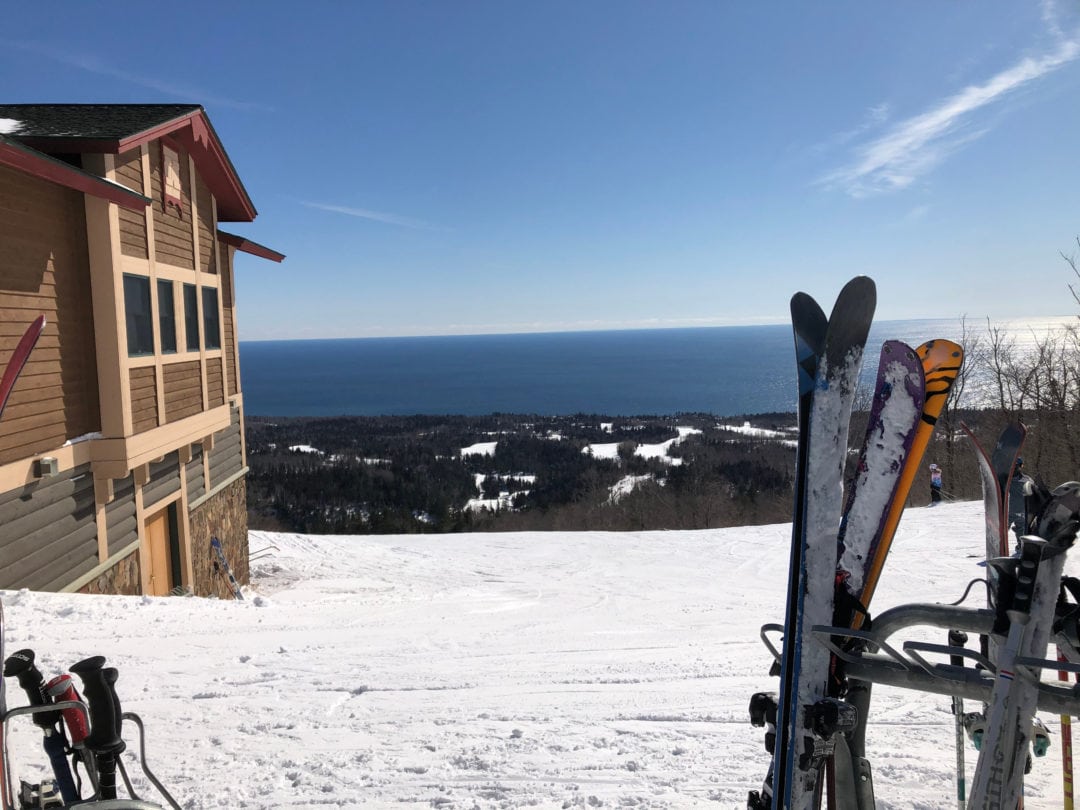
4. Lutsen Mountains, Lutsen, Minnesota
Unlike other ski resorts in the Midwest, the Lutsen Mountains ski area is actually in the mountains (technically speaking). Consisting of four mountains—Moose, Mystery, Ullr, and Eagle—within the Sawtooth Mountain range that sits along the shores of Lake Superior, Lutsen Mountains is home to some of the highest skiing peaks in the region with a vertical rise of 1,088 feet. Known for its impressive size, Lutsen offers 1,000 acres of skiable land that includes terrain parks, 95 runs, backcountry trails, and tree skiing. Skiers and snowboarders will also enjoy clear views of Lake Superior.
Getting to Lutsen in the winter months can be a challenge, however. The nearest major U.S. city and airport is Duluth, Minnesota, nearly 2 hours away, or you can fly into Thunder Bay in Ontario, Canada, and drive 2 hours to the resort. Roads can become treacherous in this area, with an annual average of 120 inches of snowfall—but once you’re there, dining and lodging options are located nearby. Lutsen Mountains recommends an array of lodging, including two ski-in ski-out resorts, and for apres skiing activities, there are five on-mountain restaurants to enjoy.
Since Lutsen is located further north, the season usually stretches from the end of November through the end of April. In the summer, visitors can ride the gondolas for epic views of the Sawtooth Mountains and Lake Superior, canoe the Boundary Waters, and hike the many nearby trails—including the Superior Hiking Trail.
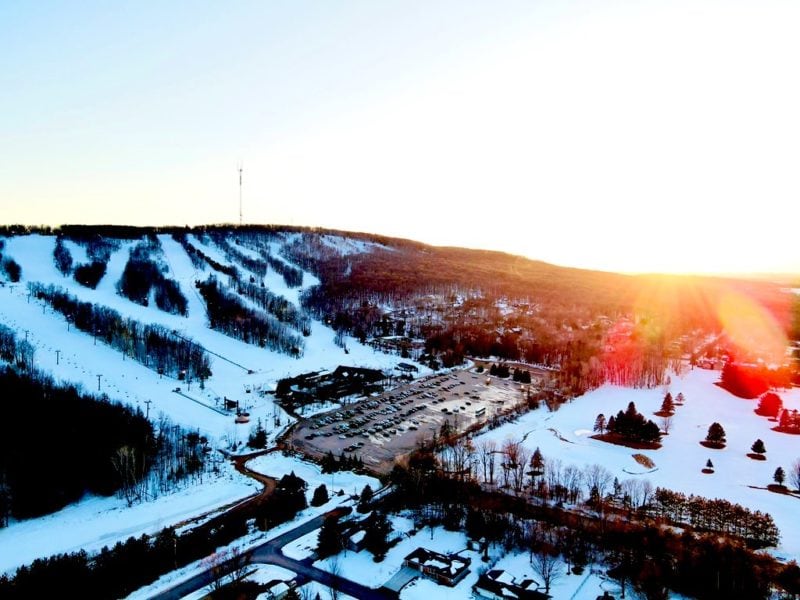
5. Granite Peak Ski Area, Wausau, Wisconsin
Since 1937, Granite Peak Ski Area has been a skiing destination for Wisconsinites and Midwesterners alike. Located in Rib Mountain State Park, Granite is the largest ski resort in the state and home to one of the most sophisticated lift systems in the Midwest—a high-speed, six-seater chairlift. The resort also offers more than 200 acres of skiable land, 60 runs, four terrain parks, four mogul runs, seven tree trails, and 700 feet of vertical. Granite invested $2.5 million in snowmaking upgrades in 2021 for longer ski and snowboarding seasons, and is known for slope-side events like the Badger State Winter Games, New Year’s Eve parties, winter carnivals, Midwest Masters Championship, and more.
Granite Peak doesn’t offer lodging on-site but partners with several hotels in downtown Wausau, which is 10 minutes away and also where you’ll find apres ski dining and entertainment options. It’s only 90 minutes from both Green Bay and Eau Claire, and less than a 3-hour drive from Madison, making it an ideal day trip adventure for those in surrounding cities.
With 75 inches of average yearly snowfall, Granite Peak is generally open from December through April. While the ski area isn’t open after the season ends, Rib Mountain State Park offers plenty of outdoor recreation year-round—including new snowshoeing trails.
6. Mount Bohemia, Mohawk, Michigan
Mount Bohemia is a standout when it comes to skiing in the Midwest. Located in Michigan’s Upper Peninsula in the Keweenaw Peninsula, this ski destination receives an average of 273 inches of snowfall per year—150 inches more than Colorado ski cities like Vail and Breckenridge. Outside of large snow amounts, Bohemia is widely known for its expert-level runs and rugged terrain that can be challenging for even the most experienced skiers and snowboarders. With 585 skiable acres, a 900-foot vertical, more than 100 runs, two chairlifts, and four shuttle buses—to pick you up from the backcountry runs—Mount Bohemia will undoubtedly put your skills to the test, and isn’t for beginner skiers and snowboarders.
Unless you’re a local Yooper, traveling to the Keweenaw Peninsula can be challenging. Houghton is the closest town to Mount Bohemia with an airport and 45-minute drive (weather permitting), but from major Midwest cities, expect anywhere from a 4- to 10-hour travel time. Once you’re there, cabin and yurt rentals are available on-site and in nearby Mohawk, along with dining and entertainment options. All lodging reservations can be made online through Mount Bohemia.
Despite the significant snowfall, Bohemia typically opens in December with the season ending in March or April. Saturday tickets are reserved for season pass holders only, so plan your trip accordingly.
